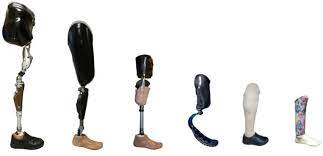Global Artificial Limbs Market Is Expected To Reach Around USD 2,758 Million By 2028
Artificial Limbs Market size was valued at USD 6.11 Billion in 2020 and is projected to reach USD XXX Billion in 2028, growing at a CAGR of 4.2% from 2020 to 2028.
The increasing number of cases such as cancerous tumors in the bone or muscles of limbs, limb infection, accidents, and severe injuries are expected to drive the Artificial Limbs Market over the predicted years. The Global Artificial Limbs Market report provides a holistic evaluation of the market. The report offers a comprehensive analysis of key segments, trends, drivers, restraints, competitive landscape, and factors that are playing a substantial role in the market.
By the end of 2025, the market for artificial limbs will have grown 1.4 times.
The artificial limbs market’s growth trajectory has been defined by advancements in the field of new technologies and prosthetic materials that are more adaptive and suitable.
Urethanes and silicone, for example, are more flexible and lightweight, with a wonderful property known as’memory,’ which allows them to respond to varied degrees of pressure.
As healthcare costs rise, major corporations are aggressively implementing research and development tools in the fields of AI and bionics.

Similarly, governments in underdeveloped countries are implementing compensation programmes to pay a portion of the cost of fitting an amputee with a prosthetic limb.
This offers a favourable atmosphere for businesses to enter very valuable markets that were previously mostly untouched.
The aforementioned factors are projected to boost the artificial limbs market, which is expected to rise at a healthy 6% CAGR during the forecast period (2020 – 2025).
Prosthetic clinics will see a significant increase in business, and hospitals will follow suit.
On the back of a comprehensive selection of customised and creative solutions for amputees, prosthetic clinics are expected to see a return. Modern braces, shoes, supports, inserts, and other devices are among them.
Prosthetic clinics are expected to account for the largest market share throughout the projection period, growing at a rate of 1.3X.
Hospitals are growing quickly, and by the end of 2025, they are expected to account for 30% of the market.
Inadvertently, an increase in the number of trauma cases, as well as industrial and traffic accidents, is generating a favourable climate for the hospital segment. Hospitals are expected to increase at a rate of 1.2X until 2025, according to projections.
Artificial Limbs Create a More Consolidated Market, but Innovations and Acquisitions Increase Competition
The artificial limbs market is extremely consolidated, with only a few major firms making significant advances thanks to considerable R&D and a well-established supply chain.
Exorbitant prices associated with top-of-the-line products are attracting a small number of participants and escalating competition.
Some of the market’s main players are Ossur, Ottobock, Hanger, Proteor, and Spinal Technology Inc.
Some of the tactics of major stakeholders in the artificial limbs market include a broad clinical service network, an ever-expanding geographical presence, an upgraded product range, and strategically-timed acquisitions. As an example,
College Park Industries, a global provider of upper and lower limb prosthesis, and Ossur signed an agreement in 2019. Ossur intends to strengthen its position in the upper limb market with this acquisition. Both organisations will be well-positioned to improve their offers if they work together.
Innovative product launches, such as the microprocessor-controlled ‘C-Leg’ knee joint, have provided value for Ottobock’s users. At all of its locations, Ottobock is also investing in digital transformation using artificial intelligence for technical orthopaedics.
North America’s artificial limbs market is booming, while Asia Pacific is poised to become a lucrative market.
North America will outperform other regions in terms of revenue, accounting for 34% of the market by 2025. According to the Centers for Disease Control and Prevention (CDC), approximately 8.5 million persons in the United States had peripheral vascular disease in 2016, with diabetes accounting for 9.4% of the population.
Inadvertently, the rise in illness prevalence is leading to a huge number of amputation instances, which is fueling market expansion.
The changing reimbursement scenario and a huge pool of amputees are expected to benefit Asia Pacific, which is expected to reach US$ 630 million by the end of 2025.
Because MEA and Latin America are smaller markets, their growth will be more stable over time.
Assessment of Key Segments in the Artificial Limbs Market
The report’s authors have split the landscape by product, technology, end user, and region in order to provide granular level insights into the artificial limbs industry. This worldwide research report additionally examines the artificial limbs market’s incremental opportunity throughout the projection period.
Ossur, Hanger, and Ottobock are among the key market participants highlighted in this detailed analysis on the prosthetic limbs market. The study’s authors examined the artificial limbs market in depth and evaluated market values based on their thorough research methodology. This comprehensive guide, based on the most recent market movements, guarantees that only accurate information reaches stakeholders, allowing them to obtain a competitive advantage in the artificial limbs market. This comprehensive reference covers current trends, pipeline medications, unmet needs, future prospects, and government regulations in the prosthetic limbs sector.
